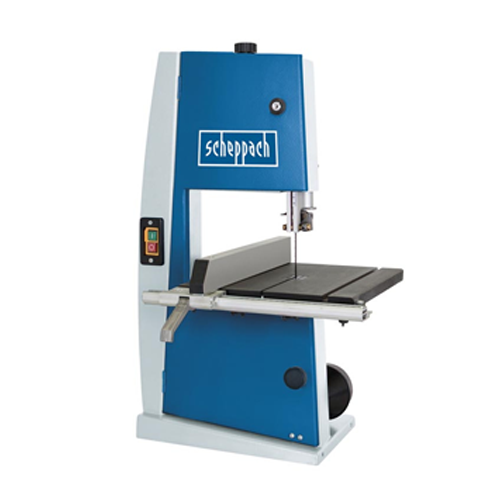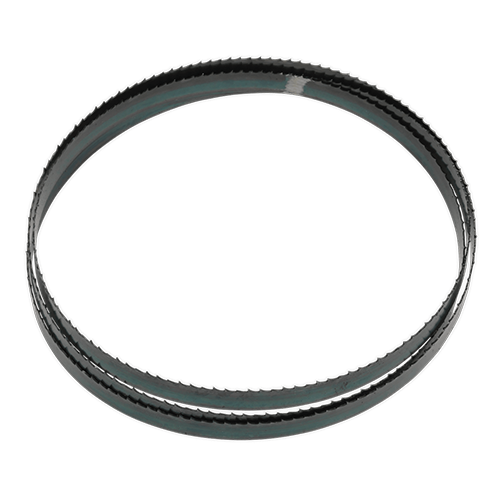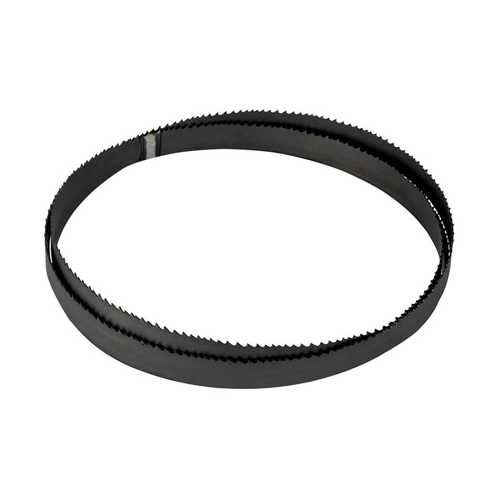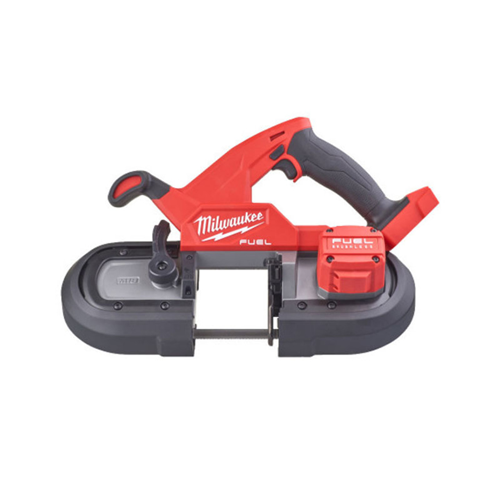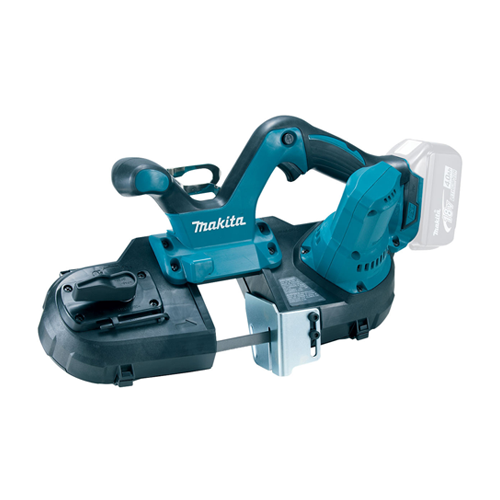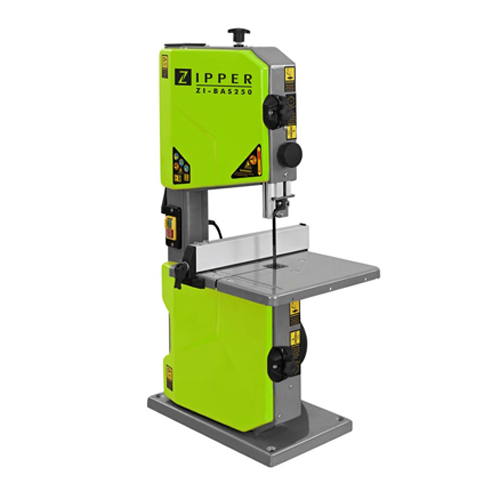The Best Band Saws of 2024: Buyer’s Guide
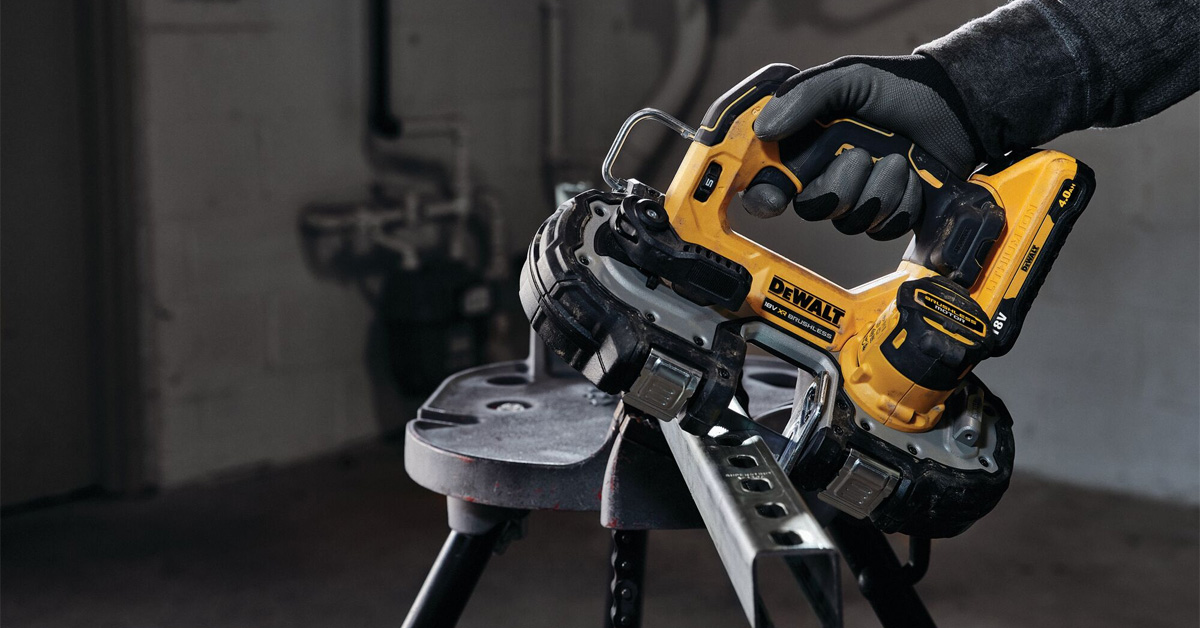
A bandsaw is one of the most versatile and popular machines in the workshop. It can be used for a huge variety of applications, such as cutting curves, ripping lumber, cross-cutting, and dimensioning thick beams. Few other machines can be used in so many different ways!
An essential piece of kit for both professional woodworkers and serious DIYers, they are available with a wide range of different types, sizes, prices, and features. With so many different variables it can be confusing to know where to start looking!
In this guide, we’ll cover the different types of band saws, what to look out for when purchasing one, and our top picks.
What is a Band Saw?
A bandsaw is a cutting tool with a long, thin blade which consists of a continuous toothed metal sheet. Typically, a bandsaw will have two to three wheels connected by a belt or chain, which spin in place and drive the movement of the blade, allowing it to cut through the material being fed to it.
Blades can come in various sizes and types, making the tool extremely versatile. While a bandsaw is most often used for cutting into wood, it is also capable of cutting through a wider variety of materials like metal and plastic if equipped with the right blade.
Popular with woodworking professionals and committed DIYers, band saws benefit from a uniform cutting action due to the evenly distributed tooth load, meaning they are capable of cutting curved or irregular shapes with ease.
Easy to use and highly versatile, they are often used for ripping lumber, cross-cutting short pieces, and resawing wood into thinner slabs. Whilst not as powerful as larger tools like table saws and mitre saws, they are still a great addition to any woodworker’s arsenal.
Types of Band Saws
One of the first things to consider when looking for a band saw is the type.
Broadly speaking there are 2 main types of commercially available band saw: stationary bandsaw and portable bandsaw.
They are both intended for different applications, so it’s important to understand the differences between the two!
Stationary Band Saws
Stationary band saws are installed on a fixed base at an appropriate working height and stay in that location. The base is typically integrated with the band saw or mounted on a separate workbench, trolley, or table.
These are designed for use in a permanent workshop with plenty of space and the ability to handle more demanding jobs. Due to their heavy weight, bulky size, and higher performance, they’re generally reserved for more intensive long-term tasks.
Portable Band Saws
In contrast to the stationary band saw, a portable band saw is designed to be worked around a piece of wood. Operated using two handles, the user guides the machine along the workpiece, or when the machine is stationary, the workpiece is guided through the machine.
Due to their portability and compact size, they are much more flexible and can be used in tighter, more confined spaces. They usually weigh between 6 and 15 kilos, significantly less than a stationary bandsaw, giving more control and a wider range of motion for more difficult work like angled cuts, bevel cuts and overhead cuts. Blade changes are also made easy with portable band saws due to the blade tensioning mechanism.
Popular with carpenters, contractors, and woodworkers on the move, portable band saws are also commonly used in metal fabrication shops to cut steel sheets.
See in Action
Features to look out for
When looking for a band saw to purchase, it’s easy to become overwhelmed by the sheer variety of features and accessories available!
In this section, we’ll break down some of the most important features to look out for, to help you better understand your requirements.
Vertical or Horizontal
If you’re going for a stationary band saw, you’ll want to consider whether it will be standing vertically, or horizontally. Vertical options can be great if you’re lacking in available floor space, and they offer better control with intricate or curved work – however, horizontal models are much better for dealing with larger amounts of stock material.
Vertical band saws are ideal for small to medium-sized workshops, and they’re excellent at cutting angles, fixtures, and curved shapes. They’re also ideal for cutting through light metal like stainless steel, with the flexible blade giving excellent cutting power along with the be
Horizontal band saws are most often used in industrial workshops and large businesses, thanks to their higher cutting rate and top-notch performance. Ideal for wood and softer metals like structural steel, horizontal band saws are a popular choice when dealing with larger workpieces.
Power
The power generated by your band saw’s motor is especially important to consider if you are working with tougher materials or longer jobs. It will determine how fast the wheels rotate, which in turn dictates how fast the band saw blade spins. This is especially important if you want to cut through different materials, as tougher materials require more power.
Band saws are either mains powered or battery powered – usually a portable band saw will be battery powered, whilst a stationary one will be mains powered.
The capacity and power of the motor is usually measured in Watts for corded variants, Horsepower for petrol band saws, and in Volts and Amperage for cordless models.
For more demanding jobs you will want to look for the highest number possible.
Cutting Height
The cutting height essentially indicates the size of the material that can be cut properly; therefore bigger cutting height means you’ll be able to work with larger pieces of wood.
Determined by a number of other factors such as power and throat capacity, machines with larger cutting heights require more power to use, and are typically more expensive. Make sure to calculate the cutting height you need, to avoid overspending!
Stationary band saws often feature cutting heights of around 500mm, while portable band saws provide at most around 300mm.
Guides
The blade guide is a really crucial part of the band saw, and is responsible for keeping the blade on track while cutting through materials. Fitted above and below the saw table to keep the blade in position, it also reduces the vibration generated whilst cutting to improve precision and provide a cleaner cut.
Although they are designed to last and are constructed from durable materials like ceramic and carbide, bandsaw blade guides can still wear out due to the constant friction of the blade from the cutting process. Because of this, you should always make sure that the guide is newly fitted, secure, and properly tested.
Band saw blades
A band saw is useless without its blades – so it helps to understand which band saw blade is best for you! Many band saws do come with blades but not every blade is designed for the same material.
Bandsaw blades are long strips of steel with a series of metal toothing on either end, which moves up and down against a surface to enact the cutting motion. These sets of teeth are usually classified in teeth per inch (TPI), with a higher TPI count generally being more suitable for thinner materials and giving a cleaner finish, whilst lower TPI counts are best for rip cutting on thicker sections of wood.
You should also take into consideration the blade width. Usually varying between 5 and 15mm, a blade with a higher width is able to withstand more speed and strain, although it will be less flexible. As a rule of thumb you should always choose the maximum blade width that your band saw allows to ensure the maximum lifespan for your tool.
Blades are also designed for a variety of different materials, so make sure to pay attention to this before you make your decision!
Toolden’s Top Picks
Milwaukee M18FBS85-0C 18V Brushless Band Saw
The Milwaukee M18FBS85-0C is a powerful brushless 18V band saw that integrates three exclusive Milwaukee technologies – the POWERSTATE™ brushless motor, REDLITHIUM™ battery pack and REDLINK PLUS™ intelligence hardware and software. This band saw delivers incredible power, run time and durability in a cordless package.
It features a large cutting capacity of 85mm, with a variable speed trigger for quick and easy speed adjustments. The tool-free blade locking mechanism provides quick and easy blade changes. It features an integrated LED light for workspace illumination.
DeWalt DCS371 18V XR Cordless Compact Bandsaw
The DeWalt DCS371 18V XR Cordless Bandsaw is ideal for cutting lengths of metal, including threaded rod, unistrut and steel pipework. Powered by 18V batteries, it is great for working over long sessions.
With a large 63mm cutting capacity, it is well-balanced and easy to handle, even for overhead cuts. It creates little to no sparks when cutting metal, with a smooth cutting action, leaving surfaces burr-free.
Makita DPB181Z 18V Portable Bandsaw
The Makita DPB181Z 18V Portable Bandsaw is an excellent entry-level portable band saw with a lightweight design that allows for excellent manoeuvrability in horizontal and overhead applications.
It includes an easy-to-grip handle with an anti-slip elastomer surface. The adjustable stopper plate allows you to cut pipes more easily near walls, floors, and ceilings – with an integrated LED work light providing better visibility. Easy blade replacement is provided with a quick blade tension release lever. Easy blade replacement is provided with a quick blade tension release lever.
Zipper BAS250 245mm Bandsaw 500W 230V
The Zipper BAS250 is our top pick for a stationary corded band saw due to its impressive power output, durable construction, and economical price tag.
With a 245 cutting height, it is ideal for cutting shapes into thicker wooden planks and boards, and a powerful 500-watt motor makes quick work of most woodworking tasks. The sturdy all-steel construction is incredibly durable and ensures a long lifespan, with a front & rear locking rip fence providing accurate straight cuts.
FAQ
What types of materials can be cut with a band saw?
Band saws can cut a wide range of materials, including wood, metal, plastic, and more. The choice of blade and its specifications will depend on the material being cut.
What are the main components of a band saw?
The main components include the frame or body, the table, the blade, the upper and lower wheel, the motor, and the guides. Some band saws also have additional features like tilting tables and dust collection systems.
Can band saws make curved cuts?
Yes, one of the significant advantages of a band saw is its ability to make curved and intricate cuts. This makes it suitable for tasks such as furniture making and crafting.
We hope this guide has helped you understand the different types of band saws and what features to look for.
At Toolden we stock a wide range of corded and cordless stationary and portable band saws for professional and DIY use. Take a look below!

